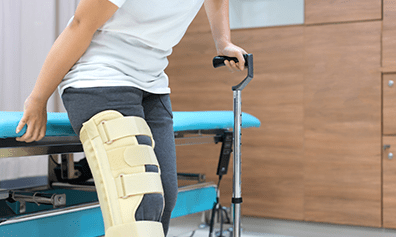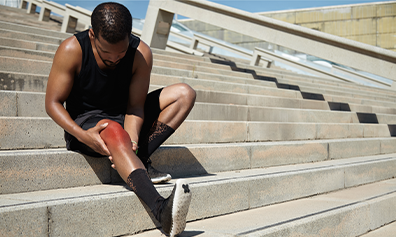
Do your heels pain when you walk? Do they crush first thing in the morning when you start walking? Well, the answer to this could be “Plantar Fasciitis.” Studies show Plantar Fasciitis is the most common reason for heel pain. Symptoms start gradually and are often worse with the first few steps in the morning.
About Plantar Fasciitis and its symptoms.
Plantar Fasciitis is the swelling of the plantar fascia (a tissue under the foot forming the arch). It causes pain under/at the heel, sometimes radiating to the turn of the foot. When palpated, tenderness may also be noted under the sole and inside the heel. Intensity may vary from slight discomfort to severe pain, depending on the extent of damage or inflammation to the fascia. Pain is usually worst in the morning with the first few steps or with the initiation of walking after prolonged sitting. This happens because the plantar fascia is relaxed for an extended period, shortening it. After a few steps, the fascia usually stretches out and relaxes.
Why does it happen?
An overuse injury secondary to over-stretching of the plantar fascia, leading to possible thickening and inflammation of the tendon. This inflamed condition can lead to pain attaching to the calcaneus (heel bone).
Who is affected?
It is more common in sportspersons involved in running, jumping, sprinting, etc., that puts over-pressure on the heels. Of course, there are causes other than overuse. However, overuse stays the primary reason. Other factors include overpronation, tight calves, obesity, previous injury, high arched foot, and poor footwear.
What to do?
To understand how to treat Plantar Fascia, we need first to identify the reason. Until and unless the root cause is treated, the effect of symptomatic treatment is just short-lived. Some of the common ways to treat a painful heel are
- • Stretching of the taut fascia
- • Testing of the lower leg muscles
- • Treating pain symptoms
- • Avoiding stressful activities (of the feet)
- • Corrective measures for other causes as discussed
For pain symptoms, rest, ice, compression, and elevation of the feet can be helpful. Taping techniques can also be used, which takes away some of the pressure from the plantar fascia. In addition, rest and decreased stress on plantar fascia aids in the healing process.

Plantar Fasciitis Taping Technique

You are stretching the Gastrocnemius muscle.

Plantar Fasciitis Plantar Fascia stretching

Plantar Fascia Stretching
For severe pain, use OTC anti-inflammatories such as Ibuprofen; however, for severely affected plantar fascia, Corticosteroid injections can be prescribed. Surgery, though performed rarely, should be the last resort for Plantar Fasciitis, and the preferable treatment protocol should be through activity modifications, appropriate choice of footwear/insoles, and exercise therapy.
































































